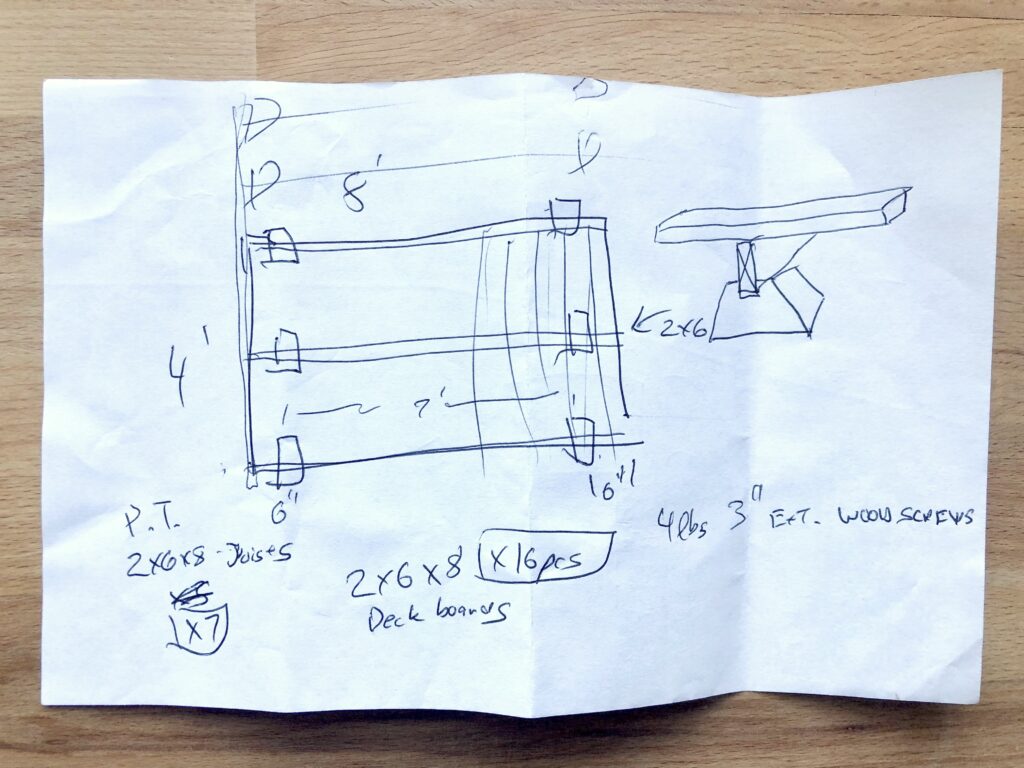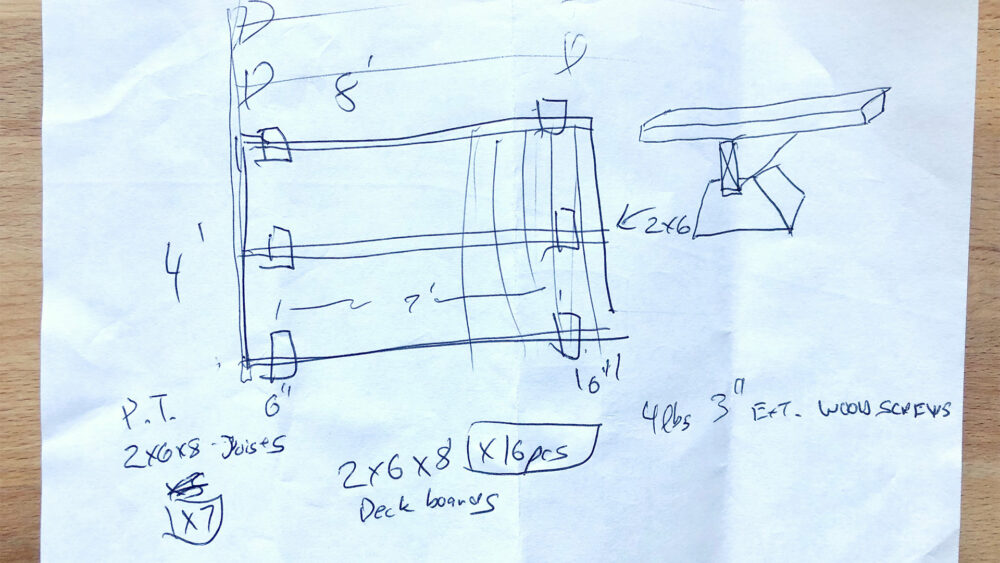You know that feeling of anxiety that you get when you take on a project that’s outside your realm of expertise?
You don’t know what tools, materials, or skills you need, let alone the steps you should follow to do things right.
That’s how I was feeling when I walked into our local hardware and lumber store with the idea of building a deck in our front yard.
I have no idea how to build a deck.
Thankfully, Jim does.
Jim’s a long-time staff member at the store, and after a brief conversation about my plans he sketched this out on a half sheet of printer paper:

It turns out that it’s not all that complicated.
You need concrete supports that keep the wood off the ground, joists that run across those supports, deck boards that go on top of the joists, and wood screws to keep it all in place.
That single sheet of paper is both a materials list and an instruction manual for building a simple floating deck.
It’s also a model that closes the gap between the vaguely possible and the certainly doable.
Good models help us to focus our attention on the pieces that matter, and they show us how those pieces are connected, not just for our intellectual enjoyment, but to help us do things in the real world.
Yes, they’re just marks on a piece of paper. But those marks have the power to unlock hidden potential in the viewer (and often, in the creator).
Jim sketched out that diagram in the span of a few minutes. Not with an eye toward artistic quality or the prospect of framing it on the wall.
He just wanted to help me with a project.
That’s visual thinking at work.
To develop your own skills and put them to work on the projects that matter to you, check out the program that best suits your needs.
Cheers,
-Doug
